
(a)
Interpretation:
The complete, detailed mechanism and the major organic product for the given reaction is to be drawn.
Concept introduction:
When an
Answer to Problem 18.65P
The complete, detailed mechanism and the major organic product for the given reaction are shown below:
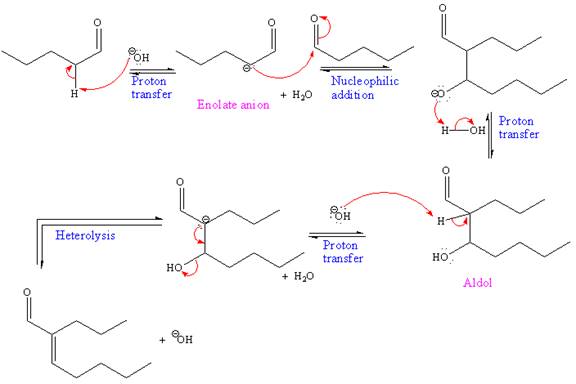
Explanation of Solution
The given reaction is as shown below:

The given reaction is aldol condensation as the sodium hydroxide and heat is given. Firstly, the given aldehyde is treated with sodium hydroxide to produce
The complete, detailed mechanism and the major organic product for the given reaction are shown below:
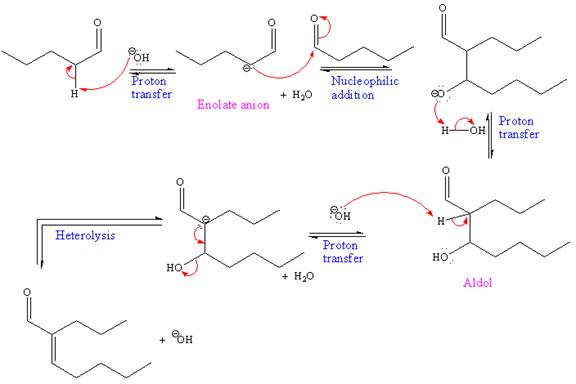
The complete, detailed mechanism and the major organic product for the given reaction are drawn by aldol addition reaction, followed by E1cb mechanism.
(b)
Interpretation:
The complete, detailed mechanism and the major organic product for the given reaction are to be drawn.
Concept introduction:
When an aldehyde is treated with sodium hydroxide, the product
Answer to Problem 18.65P
The complete, detailed mechanism and the major organic product for the given reaction are as shown below:
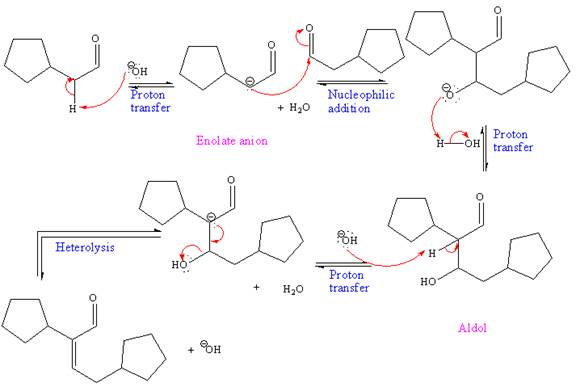
Explanation of Solution
The given reaction is shown below:

The given reaction is aldol condensation as the sodium hydroxide and heat is given. Firstly, the given aldehyde is treated with sodium hydroxide to produce
The complete, detailed mechanism and the major organic product for the given reaction are shown below:
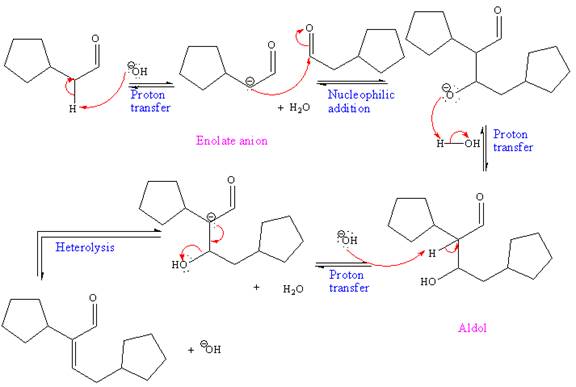
The complete, detailed mechanism and the major organic product for the given reaction are drawn by aldol addition reaction followed by E1cb mechanism.
(c)
Interpretation:
The complete, detailed mechanism and the major organic product for the given reaction is to be drawn.
Concept introduction:
When an aldehyde is treated with sodium hydroxide, the product
Answer to Problem 18.65P
The complete, detailed mechanism and the major organic product for the given reaction are as shown below:
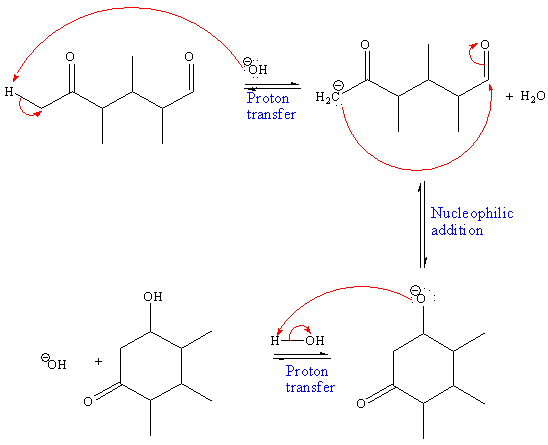
Explanation of Solution
The given reaction is shown below:
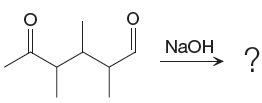
The given reaction is aldol addition as the sodium hydroxide is given. The given aldehyde is treated with sodium hydroxide to produce
The complete, detailed mechanism and the major organic product for the given reaction are shown below:

The complete, detailed mechanism and the major organic product for the given reaction are drawn by intramolecular aldol addition reaction mechanism.
(d)
Interpretation:
The complete, detailed mechanism and the major organic product for the given reaction are to be drawn.
Concept introduction:
When aldehyde is treated with sodium hydroxide, the product
Answer to Problem 18.65P
The complete, detailed mechanism and the major organic product for the given reaction are as shown below:
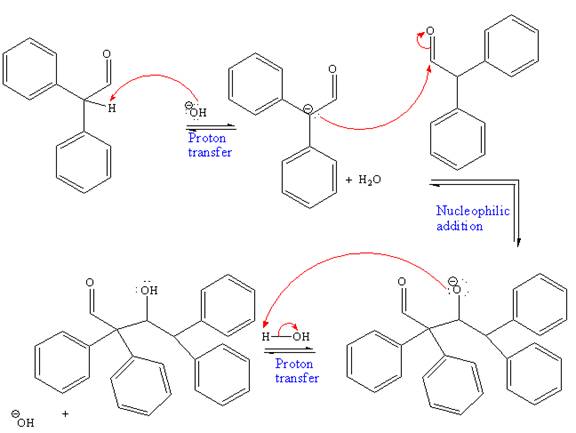
Explanation of Solution
The given reaction is shown below:
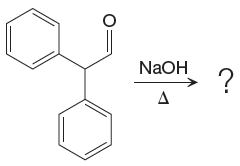
The given reaction is aldol condensation as the sodium hydroxide and heat is given. Firstly, the given aldehyde is treated with sodium hydroxide, to produce
The complete, detailed mechanism and the major organic product for given reaction are shown below:
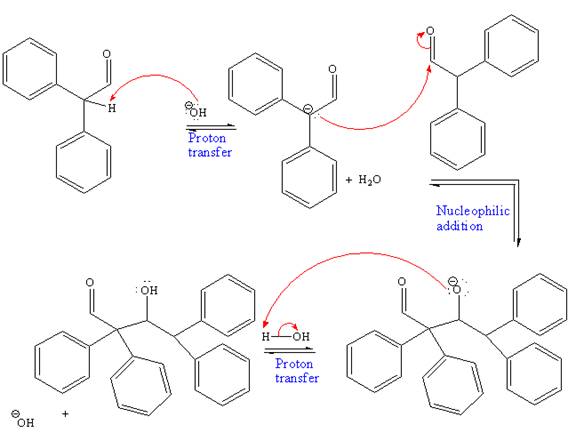
The complete, detailed mechanism and the major organic product for given reaction are drawn on the basis of aldol addition reaction mechanism.
Want to see more full solutions like this?
Chapter 18 Solutions
EBK ORGANIC CHEMISTRY: PRINCIPLES AND M
- Speaking of composite materials, indicate the correct option:(A). Composite materials can only be: metal-polymer or polymer-polymer.(B). Composite materials can be made up of particles, but not fibers or sheets.(C). When the reinforcing particles are uniformly distributed in a composite material, there may be a greater tendency for it to have isotropic properties.(D). None of the above is correct.arrow_forwardIf we are talking about viscoelastic modulus or viscoelastic relaxation modulus in polymers, indicate the correct option.(A). It reports the variation of elastic behavior as a function of time.(B). It is only useful for defining its glass transition temperature.(C). It only allows us to define the polymer degradation temperature.(D). Neither option is correct.arrow_forwardWhen natural light falls perpendicularly on a material A, it has a reflectivity of 0.813%. Indicate the value of the refractive index.arrow_forward
- In piezoelectricity and piezoelectric ceramics, one of the following options is false:(A). Piezoelectricity allows an electrical signal to be transformed into a mechanical one.(B). PbZrO3 is a well-known piezoelectric ceramic.(C). Piezoelectricity and ferroelectricity in general have no relationship.(D). One of the applications of piezoelectricity is sonar.arrow_forward(30 MARKS) Give the major product(s ) formed including relevant stereochemistry or the complete reaction conditions for the following reactions. More than one step may be required for each reaction arrow, in which case the steps must be numbered 1), 2) etc. (2 marks each box) h) i) h) OH i) HO H3PO4, heat 2 Brarrow_forwardNonearrow_forward
- Indicate which option is false(A). Resistivity has a residual component and a thermal component.(B). In some materials resistivity increases with T and in others it decreases.(C). In insulating materials, resistivity is very low.arrow_forwardIn ceramic materials, in relation to polymorphism, the same substance crystallizes differently when external conditions vary. Is this correct?arrow_forwardIndicate the type of bond that is considered to be a hydrogen bond.(A). Permanent dipole-dipole interaction between polar molecules.(B). Mixed ionic-covalent bond.(C). Principal interatomic bond(D). Van del Waals forces.arrow_forward
- Retro aldol: NaOH H₂O H NaOH & d H₂O Harrow_forwardDraw the product of the reaction shown below. Ignore inorganic byproducts. H conc. HBr Drawing Qarrow_forwardCalculate the atomic packing factor of diamond knowing that the number of Si atoms per cm3 is 2.66·1022 and that the atomic radii of silicon and oxygen are, respectively, 0.038 and 0.117 nm.arrow_forward
 ChemistryChemistryISBN:9781305957404Author:Steven S. Zumdahl, Susan A. Zumdahl, Donald J. DeCostePublisher:Cengage Learning
ChemistryChemistryISBN:9781305957404Author:Steven S. Zumdahl, Susan A. Zumdahl, Donald J. DeCostePublisher:Cengage Learning ChemistryChemistryISBN:9781259911156Author:Raymond Chang Dr., Jason Overby ProfessorPublisher:McGraw-Hill Education
ChemistryChemistryISBN:9781259911156Author:Raymond Chang Dr., Jason Overby ProfessorPublisher:McGraw-Hill Education Principles of Instrumental AnalysisChemistryISBN:9781305577213Author:Douglas A. Skoog, F. James Holler, Stanley R. CrouchPublisher:Cengage Learning
Principles of Instrumental AnalysisChemistryISBN:9781305577213Author:Douglas A. Skoog, F. James Holler, Stanley R. CrouchPublisher:Cengage Learning Organic ChemistryChemistryISBN:9780078021558Author:Janice Gorzynski Smith Dr.Publisher:McGraw-Hill Education
Organic ChemistryChemistryISBN:9780078021558Author:Janice Gorzynski Smith Dr.Publisher:McGraw-Hill Education Chemistry: Principles and ReactionsChemistryISBN:9781305079373Author:William L. Masterton, Cecile N. HurleyPublisher:Cengage Learning
Chemistry: Principles and ReactionsChemistryISBN:9781305079373Author:William L. Masterton, Cecile N. HurleyPublisher:Cengage Learning Elementary Principles of Chemical Processes, Bind...ChemistryISBN:9781118431221Author:Richard M. Felder, Ronald W. Rousseau, Lisa G. BullardPublisher:WILEY
Elementary Principles of Chemical Processes, Bind...ChemistryISBN:9781118431221Author:Richard M. Felder, Ronald W. Rousseau, Lisa G. BullardPublisher:WILEY





